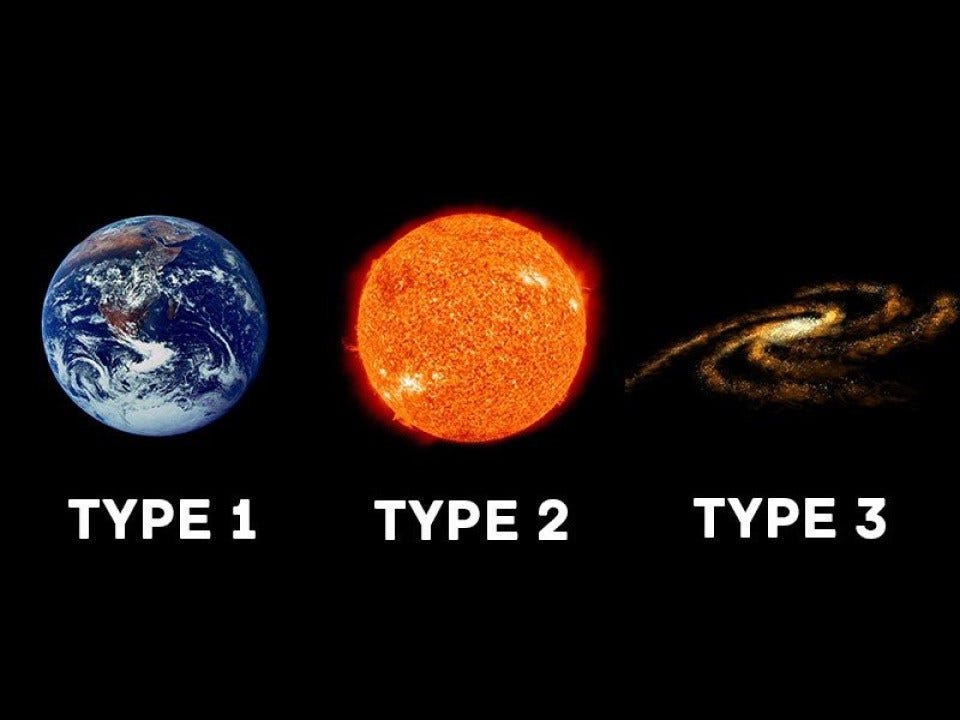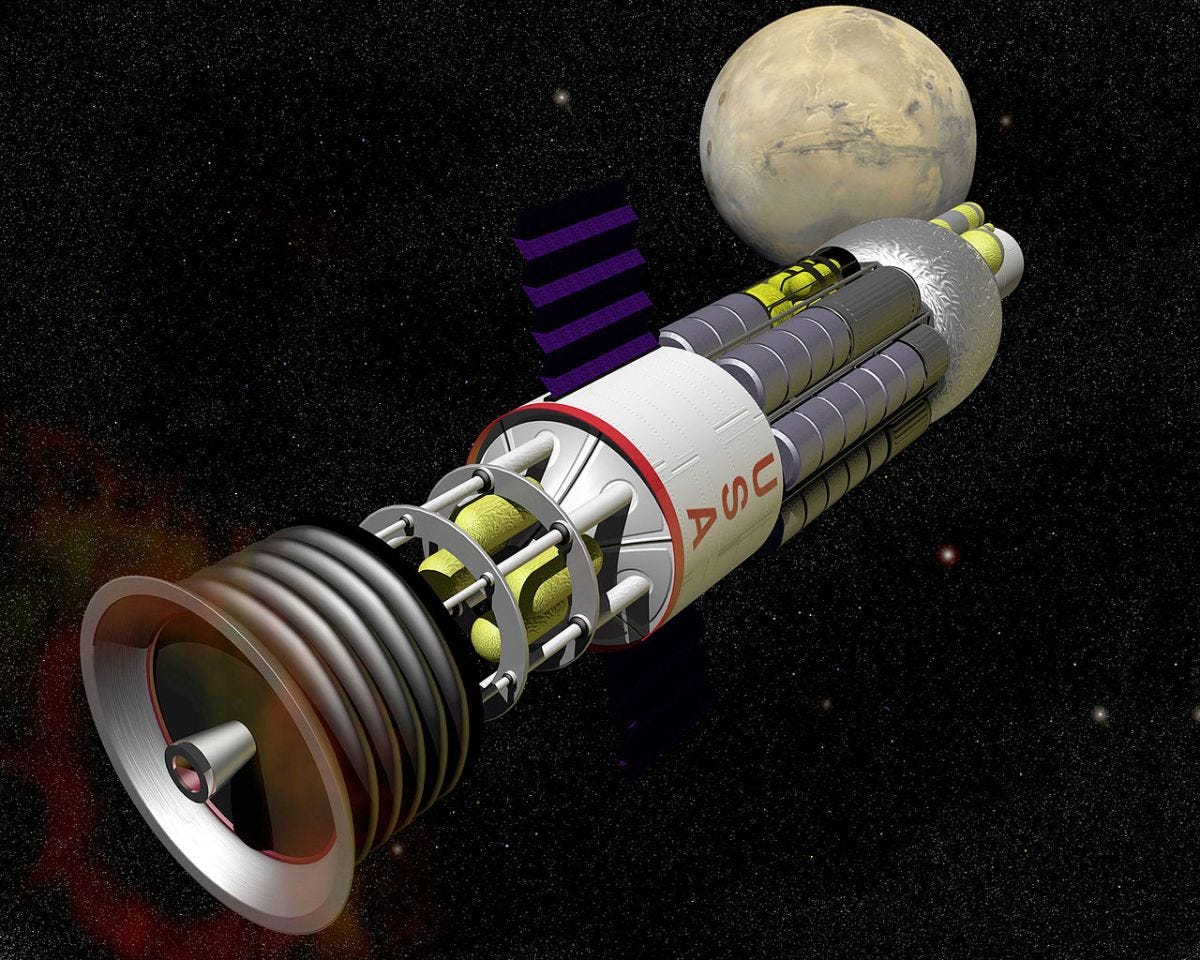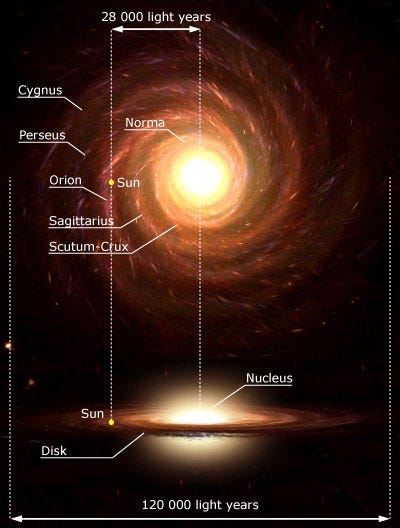Can there be a galactic empire?
Are galactic empires akin to ones in Star Wars and Isaac Asimov’s Foundation possible?

As technology progresses, humans increasingly exploit resources of our home planet. One day, we might become an interplanetary species as imagined in The Expanse. One of the fundamental steps towards that is to build large, reusable rockets, which SpaceX is inching towards and others intend to follow. Another fundamental step is space mining i.e. extract and make use of natural resources available on planetary bodies. The Moon possessing more than 600 billion kg of water ice and a shallow gravity well will play a central role in colonization of the solar system.
Going interstellar, however, will require extremely powerful rockets that can travel at a significant fraction of the speed of light to cover the vast distances involved. Nuclear powered spacecrafts are then a potential solution, like the previously proposed Project Orion in the 1970s. At 10% the speed of light, the nearest star can be reached in about 40 years, which isn’t bad at all. Once the technology is achieved, is stable and reliable, colonizing nearby Interstellar systems will be within reach and no longer remain only a science fiction dream.

Colonizing the galaxy is another level of challenge altogether. Our Milky Way galaxy consists of at least 200 billion stars! One end of our galaxy is 100,000 light years away from the other! Colonizing even a fraction of the Milky Way is a massive undertaking for any intelligent species.

Notice that every step in becoming a higher order civilization requires a major physical barrier to be overcome. Some prime advances accordingly can be summarized as follows.
- Humans spreading and thriving worldwide : Invention of fire, the stone and metal ages, agriculture.
- Effective global economics: The Industrial Revolution, global water and air travel, real-time communications.
- Interplanetary habitats: Reusable rockets, space mining, advances in biotechnology and space agriculture.
- Interstellar presence: Extremely powerful and large rockets, ability to re-engineer planets and moons, achieve long human life spans.
So what physical barrier needs to be overcome to become a galactic civilization? The gigantic distances of course. This brings us to the very core of all science fiction that has ever dreamed of a galactic empire—A warp drive.
A warp drive can supposedly enable travel from one point in space to another point directly, without the passage of time; much like traveling through a wormhole. Such a technology would allow us to suitably travel these galactic distances and enable us to potentially build a galactic empire. Star Wars, Star Trek, Isaac Asimov’s Foundation Series and numerous other science fiction stories make use of warp drives or similar technologies.

But as reality stands, warp drives are probably more fiction than science. Without such a technology, colonizing the entire galaxy is an enormous task that may always be out of reach. It turns out there is another pragmatic way. The way bacteria and viruses spread can prove to be a very effective solution.
Assume that colonization of one star system by an interstellar species takes one thousand years, which is a realizable number. The additional resources thus available from the colonized star system can be used to replicate the same process in another nearby star system. Two star systems can now go on to colonize four star systems in next 1000 years, and the cycle continues. This scheme translates to the following numbers in terms of expanding human presence in the galaxy.
Time (years) Star systems settled in1,000 2¹ = 22,000 2² = 44,000 2⁴ = 1610,000 2¹⁰ = 102420,000 2²⁰ = 1 million+30,000 2³⁰ = 1 billion+40,000 2⁴⁰ = 1 trillion+ star systems!
See how quickly things escalated? 40,000 years and one can cover all the stars in the Milky Way.
In less time than humans originated on Earth in their current form, an entire galaxy can be colonized by the use of a simple geometric progression method.
Even if we relax the original 1000 year assumption needed to colonize a star system and make it 10,000 years, colonization takes less than a million years, which is puny compared to cosmological time scales.
Colonizing the galaxy however has its challenges. A centrally governed galactic empire, if at all there can be one, would find it very difficult to exercise proper control over all parts of the galaxy at once. The physical barrier thus involved might naturally give rise to more decentralized forms of economics and governance.
Will we ever manage to spread across the entire galaxy? Will we be a Type-3 civilization as envisaged by Kardashev? I don’t know. But I do know that it’s worth fighting towards. Right now though, we are not even an interplanetary species. If we don’t act soon enough, it can cost us our very existence, for whatever its worth.
New worlds await us, the lights of a billion suns, not a sunrise, but a galaxy-rise.
Like what you read? I don’t display ads, support me to keep me going. 🚀
